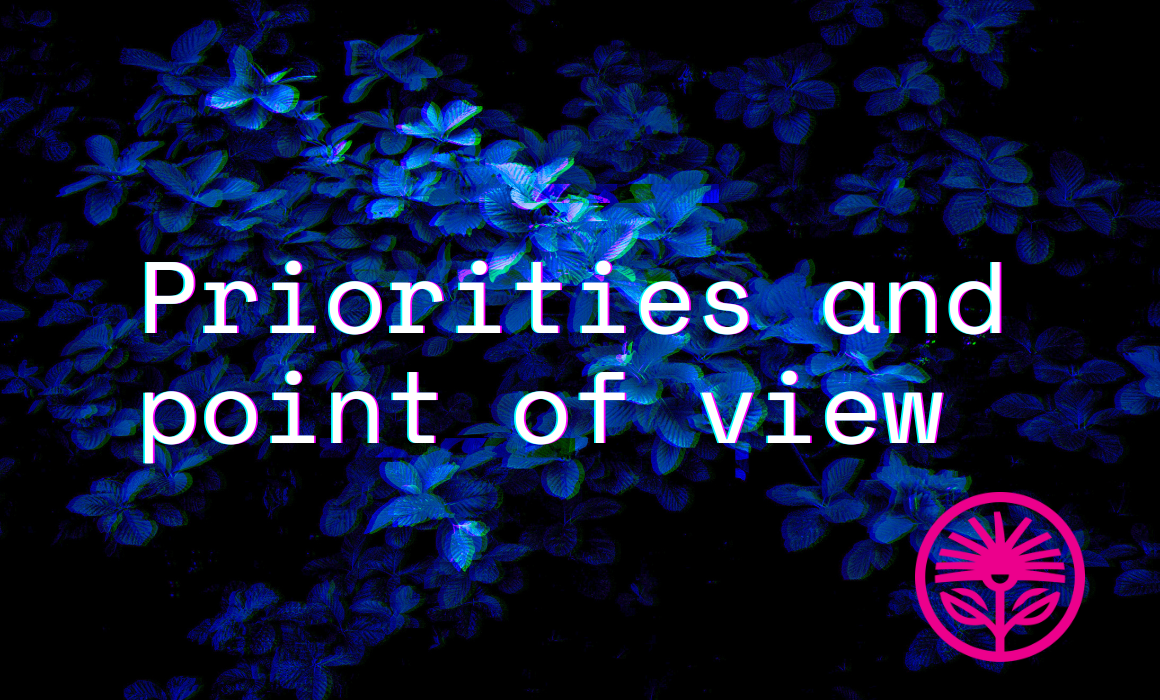Priorities and point of view — Kelford Labs Weekly
Where to start with what I’ve written.

I’ve said before—hundreds of times, I assume—that marketing is simply demonstrating value at a distance.
And so much of our value comes from what we value. The things we prioritize because we feel they’re important. And the things we trade off because we don’t.
Our point of view is reflected in the way we demonstrate what we care about, what we focus on, and what we prioritize or avoid. And, for service providers, the way we do that most prominently and publicly is through content.
The best way to demonstrate value, then, is to provide value.
The best way to show what we do is simply to do it. So the content we choose to write about points to our priorities and tradeoffs.
Because I believe this, I’ve done my best to practice it. Over the past few years, I’ve written a lot of Kelford Labs content. Something north of 550 posts and more than 500,000 words.
And since I prioritize focus and clarity along with content, I gathered subscriber (and my own) favorites from a few major categories I cover. So you can know where to start and know what I prioritize from my point of view.
If any of your favorites are missing, please reply and let me know!
I’ve also updated my About page to include these links, so if you’re ever inclined to share this newsletter with a friend or colleague, that’s become a much better place to start.
Defining and defending your marketing position
Write this before you write anything else: A super simple guide to crafting a marketing position.
“With a marketing position, you can avoid the habit of writing what you want to say, and start writing what they need to hear.”
The condition of your position: Assessing your marketing position and avoiding the classic mistakes.
“So don’t be precious about your position, because your customers aren’t precious about you. They’re precious about their problem.”
Your process is your position: Why we do what we do is expressed by how we do what we do. Which means, in many ways, the process is the position.
“Your process is valuable, it is what creates the value you market and sell to your clients. So don’t dismiss your process as being too obvious or too rote to share. If you can describe what you do as a process, you’re more likely to know what you’re doing.”
Staying motivated and persistent with your marketing
Crisis Model: Zero Plan: How to plan for the worst outcomes in marketing and business.
“There are certainly marketing outcomes that can feel like disasters. Like, have you ever tried to sell something and gotten zero sales? It absolutely sucks, doesn’t it? I know, because it’s happened to me. And I’m a professional marketer! Imagine how bad that feels.”
The secret to marketing performance: The only way to get marketing performance is through marketing practice.
“So, if you want to know the absolute perfect, can’t-go-wrong place to promote your work, I’m thrilled you’re interested. And I’m excited for you to find out. But first, you’ve got to start playing.”
Confidence from wrongness: The art and science of getting better by making mistakes.
“Marketing is made up of mistakes. Things we did that didn’t work. That’s how we find our way to what does work. And if we’re not making mistakes, we’re not really experimenting.”
Why to build and how to implement a content strategy
What keeps them from slipping away: How content helps us stay on the mind of the people who matter most.
“If we’re not providing content to help make our prospects more comfortable buying from us, are we forcing them to choose too soon—and losing out on opportunities?”
Organic content in an AI world: Written six months after the launch of ChatGPT, still relevant to our situation.
“Content can help if your business delivers something AI or language models won’t, don’t, or can’t. Something that’s unique to you, and uniquely valuable to the customers who want it most.”
The secrets to LinkedIn content: The results of my experiment to use LinkedIn more actively to provide value.
“If it takes millions of impressions to make an impact (or make a buck), that’s not actually a good thing. Better to have a smaller audience that cares and that you can help than a giant one that bogs you down.”
How to know what to say in your marketing messages
Always know what to say: How to confidently talk about your value in any situation.
“Think about it this way: You’re agonizing over your own marketing, and yet you assume your customers are doing a better job? No, you’ve got to be so good they can’t mess it up.”
Where to find marketing gold: Three places to look for marketing messages that work.
“At the root of all good marketing, there is value. All the clever language, brilliant designs, or innovative placements in the world won’t help us if, at the core of our marketing efforts, there isn’t real, credible value for our very best customers.”
Messaging mistakes: A short description of the four most common messaging mistakes I see.
“Your copy needs to demonstrate value, not promise it. Use your words to show the tradeoffs you’ve made, which make you the ideal provider for a particular person. Show them what you don’t do and they’ll value what you do even more.”
Finding and talking to your target audience
“You’ll get eaten alive”: The answer to growth is focus.
“When you're a credible expert in one area, for good or bad, people just assume you’ve got expertise in other areas, too. But when you do everything, people just assume you don’t do any of it very well.”
What makes an ideal client?: A simple guide to identifying the clients to focus your efforts on.
“Does that mean the people you simply like the best? Or the clients with the most money? Or the clients with the simplest problems to solve? What do I mean when I say ideal?”
Ideal, not imaginary: How to find your best clients by focusing on your next best clients.
“Instead of trying to jump, in one long bound, from where you are to where you want to be, you carve a path through the field of opportunity. Slowly, steadily—but surely—you focus your efforts on the clients closest to the ones you want, starting with the ones you already have.”
How to build and scale a brand you love
“Make me laugh”: An admitted tome of a piece on what branding is, does, and requires.
“Put simply, ‘branding’ is just the answer to the customer’s first, most obvious question: ‘Why should I care who made this?’ Or, perhaps more crassly and accurately, ‘Why does this one with the fancy logo cost more?’”
Sales, marketing, or branding?: Definitions to help you know what your business most needs next.
“Do I need help demonstrating my value in the moment and closing the deal? (Sales) Do I need help demonstrating value at a distance and getting more people one step closer to a purchase? (Marketing) Or do I need help demonstrating my values at all times so my best customers associate me with their best feelings? (Branding)”
Scale from specifics: The best way to build a big brand is by being specific.
“What we need to look at is not ‘what do big brands do?’ but ‘how did they get so big?’ And the answer to that, usually, is focus.”
If you can, I’d appreciate it if you shared this post with a friend, colleague, or connection who’s looking to learn more about the art and science of demonstrating value at a distance.
Which is all marketing is.
Kelford Inc. shows you the way to always knowing what to say. Marketing positions and messages for hands-on entrepreneurs.



